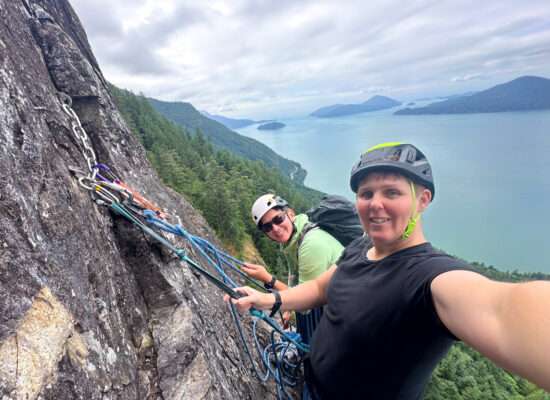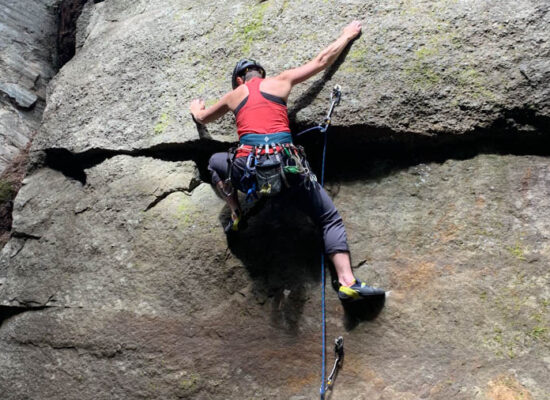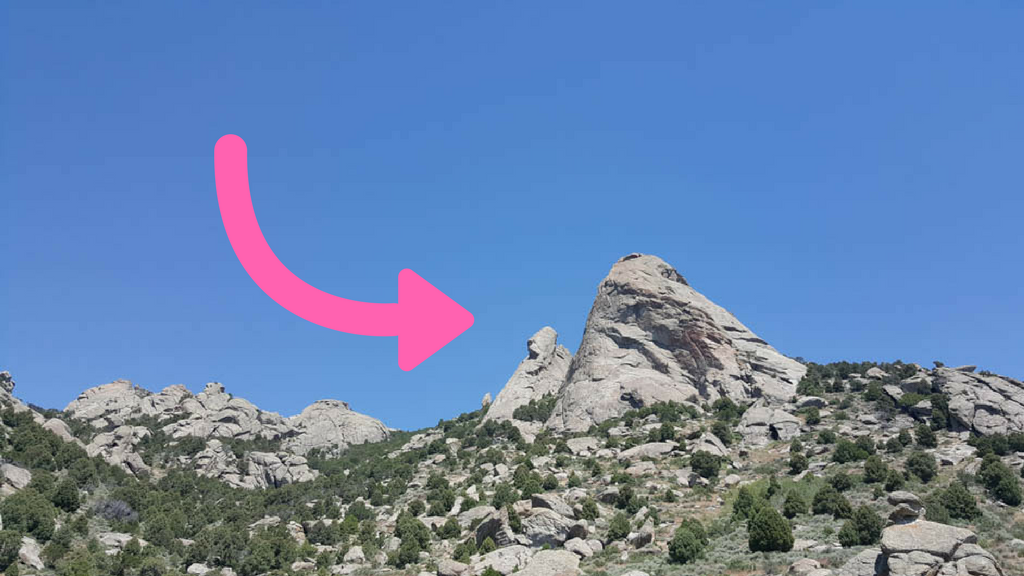The Goat is a 650m (2100ft) climb in Marble Canyon, about an hour outside of Kamloops. It is 19 pitches long and is a 5.9.
For Squamish friends, this is about the same as the longest routes up The Chief. For non-climbers, this is much taller than the tallest skyscraper in North America (One World Trade Center in New York).
It’s alpine-style limestone slab climbing, which is quite different than most of the climbing you might practice in the gym or even in Squamish. There are a lot of loose rocks that can hurt or kill people below you if you knock them loose accidentally.
Slab climbing relies a lot on friction rather than grabbing onto things with your hands or resting your feet on little ledges. Limestone can become polished, which means it can feel slippery as it’s climbed more over time. It is sort of like you’re trying to pad up there like a little gecko on rocks that may feel like glass at times.
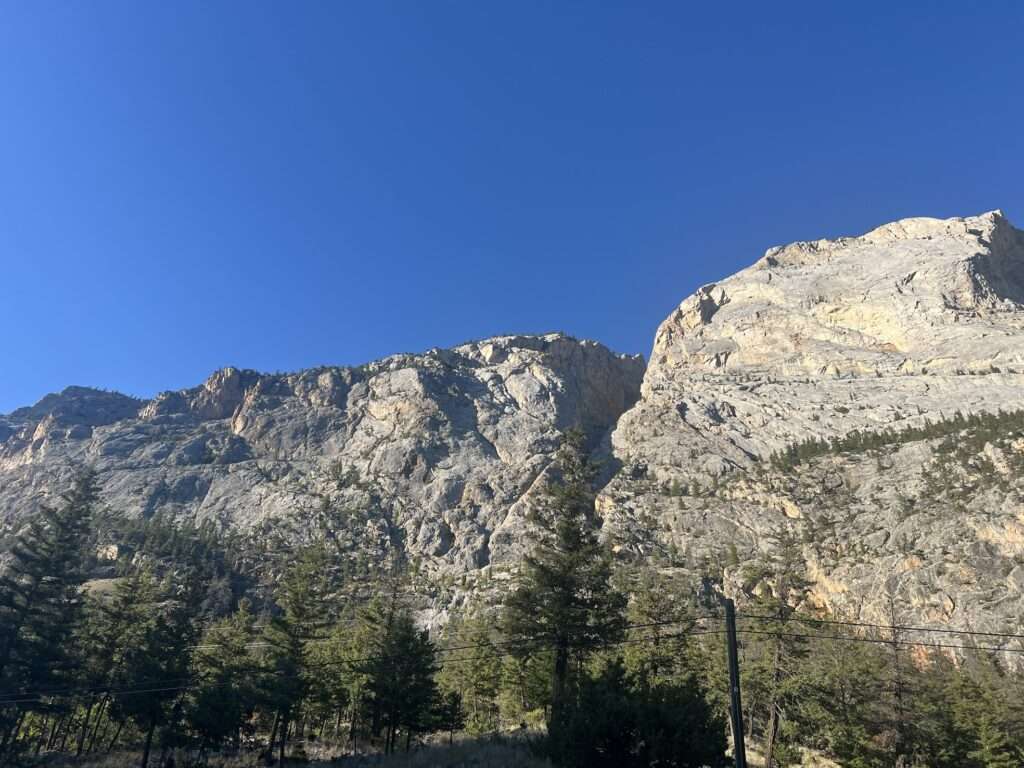
A lot of the stories I see online are written by very good climbers. Confident people who run up there in a few hours using techniques like simul climbing. They make it seem like a warmup. Easy!
But for me, an average climber, it was pretty darn challenging! I had a hard time! I was nervous! We were careful! It was a big deal!
So with that, my humble story of an average person, climbing The Goat.
Preparation
I started climbing about fifteen years ago, and it has been a central part of my life ever since. However, I hadn’t climbed much in the past two years due to long covid. So this summer, Lee and I were on a mission to climb outside as much as possible and as hard as possible.
After a few months of climbing two or three times a week, we were both confident onsighting 5.9. (Onsight means you climb something without knowing anything about it or having tried it ever before.) Lee is stronger and can get up harder stuff than I can.
We also started climbing many multipitches to become as efficient as possible with our rope management skills. We climbed a few short multipitches in the Rockies that were a similar limestone slab style. We also tackled 100 Zulu and Western Harlot in Squamish. The last multi we did before The Goat was Throne of Kings, which was the longest climb I had done to date… but only a third of the height of The Goat.
Camping
We drove up to Marble Canyon ahead of our scheduled climbing day. We spent Saturday night in Cache Creek, enjoying some amazing tacos.
On Sunday, we moved to the Marble Canyon rec site, which has first-come, first-served camping. There were tons of spaces on a Sunday.
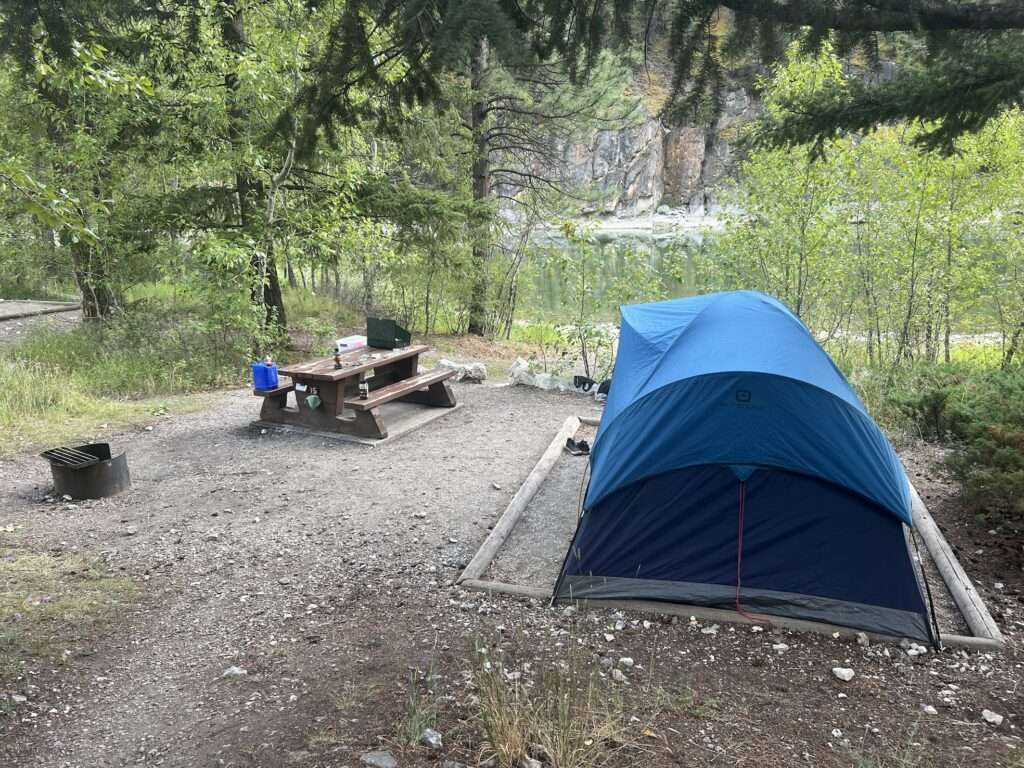
We chose to climb on Monday rather than the weekend, as we had read about the serious rockfall danger. This proved to be an excellent choice!
From the highway, we were able to watch people climb. We saw two groups bunched up together about two-thirds of the way up, where the more difficult climbing started. We saw one party coming down (rappelling) while another party was climbing. It happens sometimes… but yikes! Scary!
There were several cars in the parking area, meaning there may have been even more parties ahead or behind we didn’t see.
After feeling confident in our decision to climb on a weekday, we went back to the campsite. We got our food and gear ready. We practiced some rock rescue skills. And then we rested.
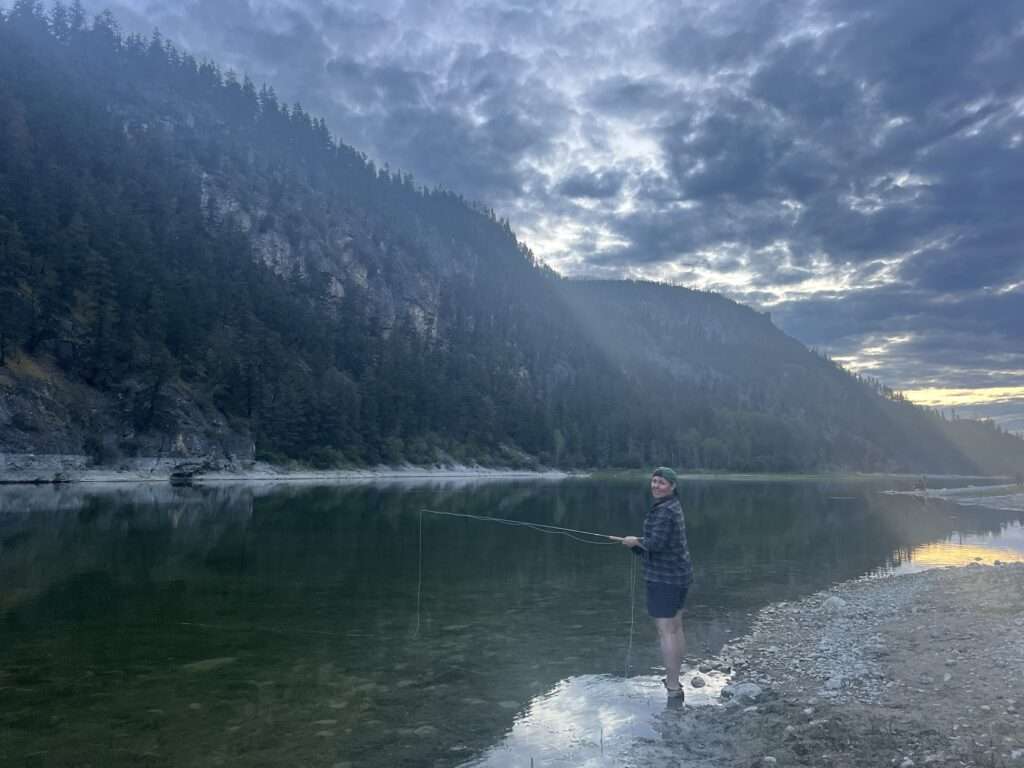
Our alarm clocks were set for 4:00am the next day.
Climbing
We parked around 5:45 am and started climbing around 6:15 am. I think on a weekend, this would be considered a late start. But we mostly were trying to beat the sun, rather than the crowds, so this was our compromise to get a bit more sleep.
The first two pitches were surprisingly polished (aka smooth). It actually freaked me out a bit, and I almost told Lee we should just turn around now. But then I realized, we could turn around whenever we wanted. So might as well keep trying.
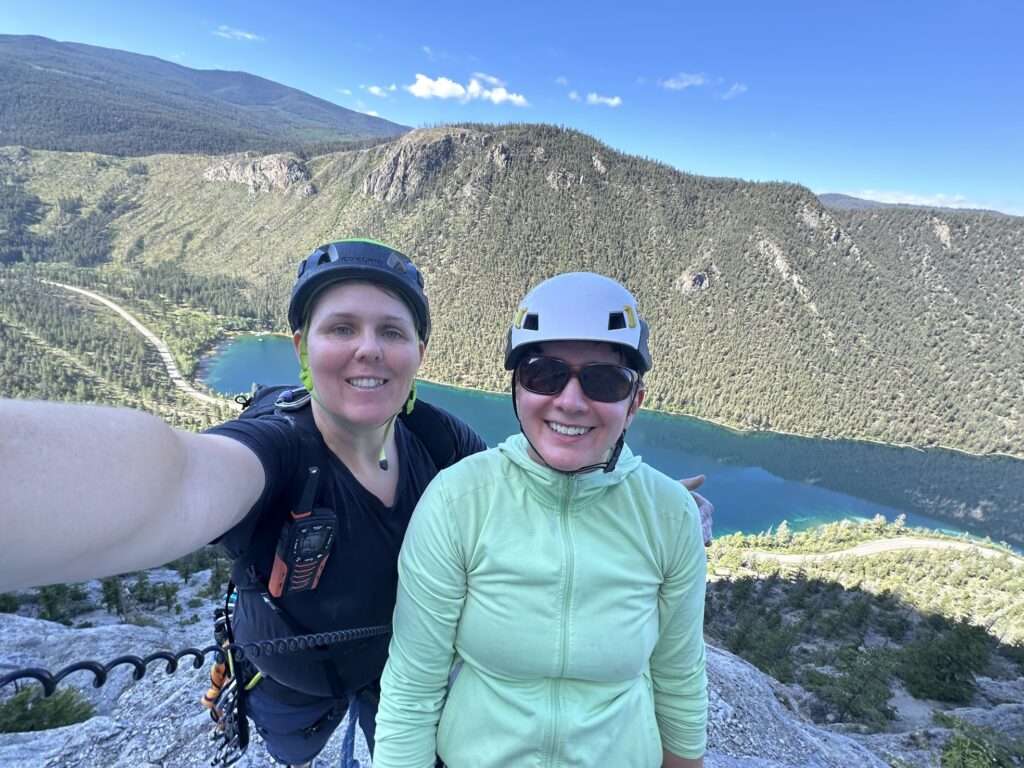
Pitch three felt a bit better. And the rock kept getting better the higher we went.
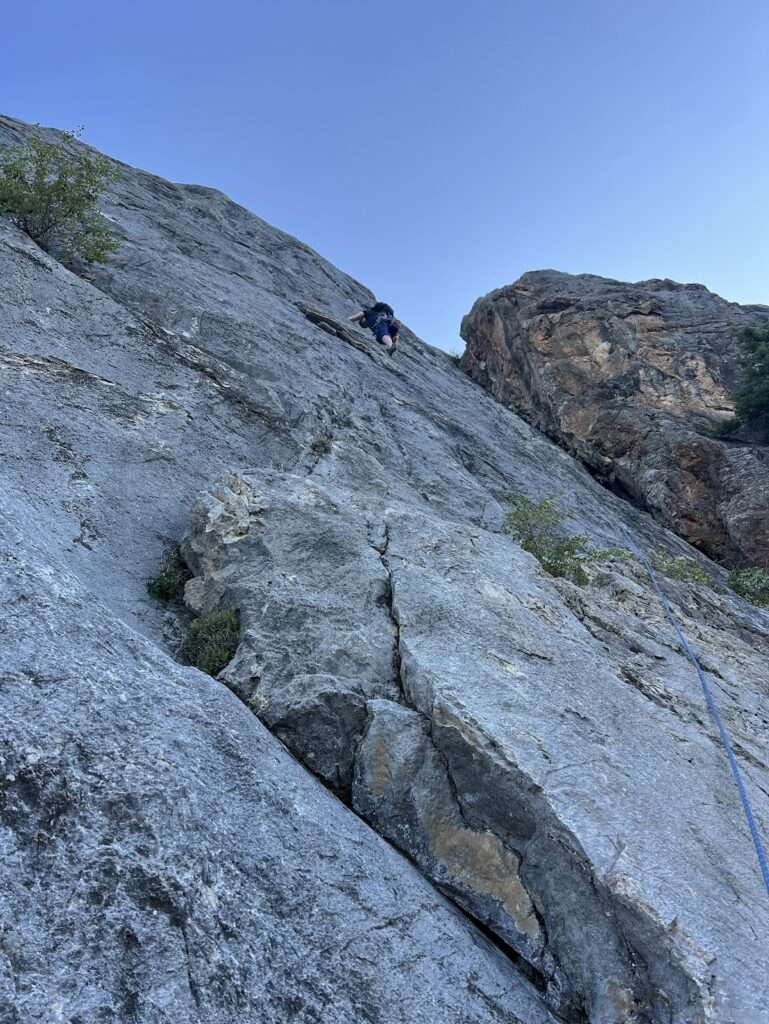
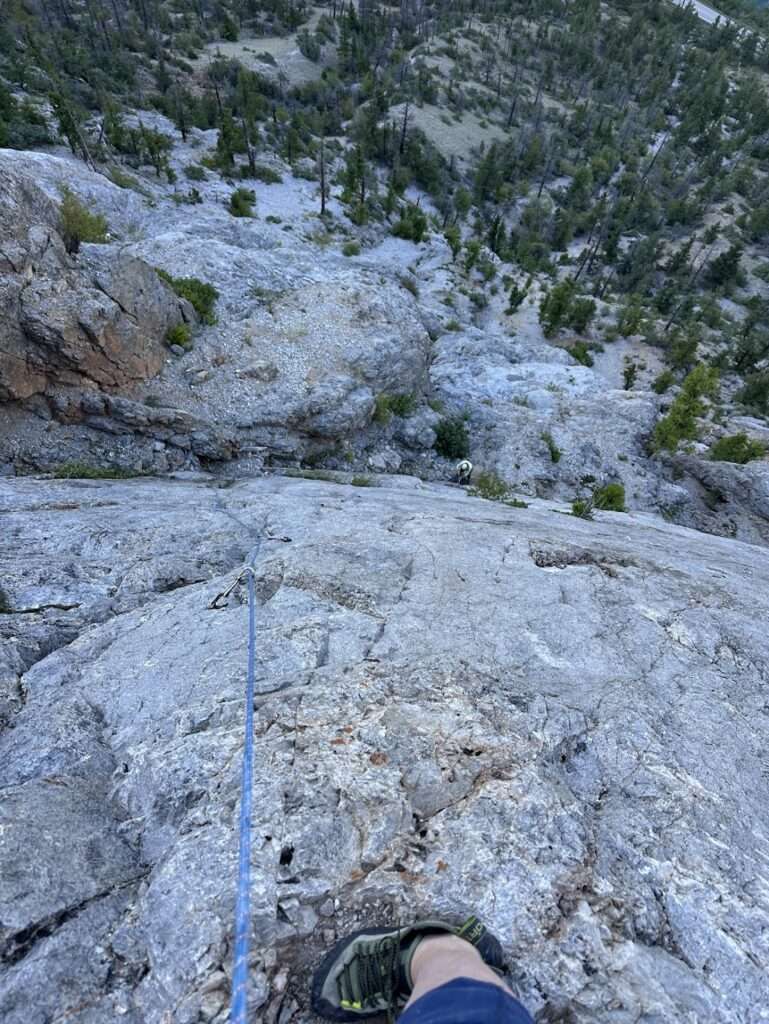
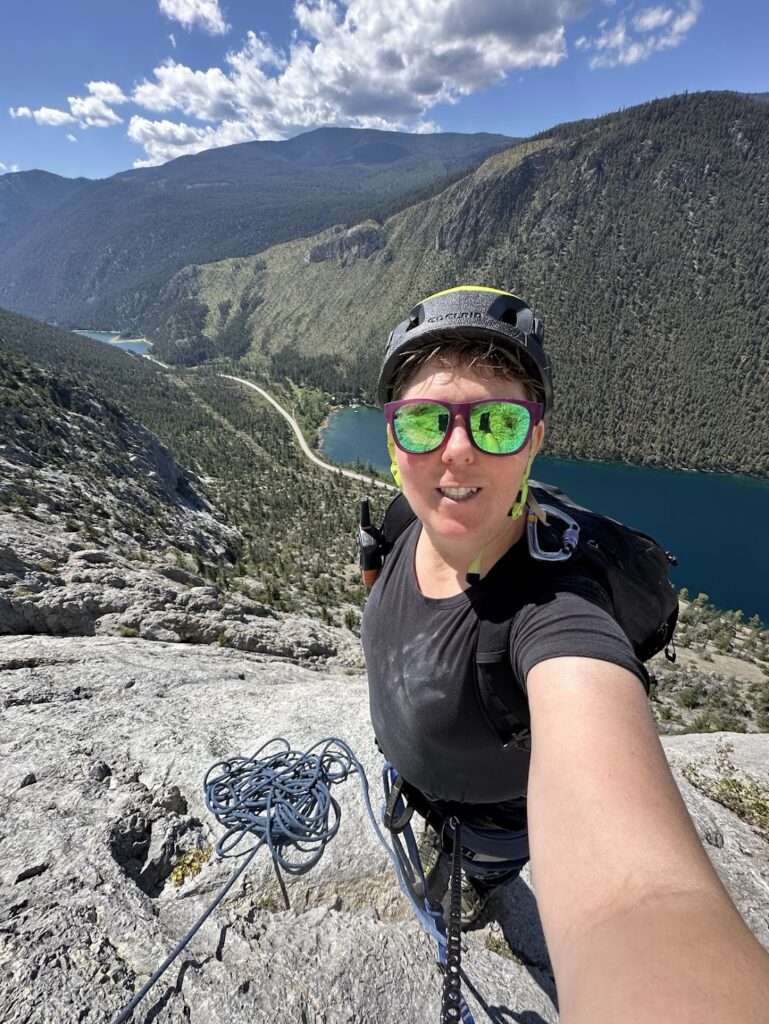
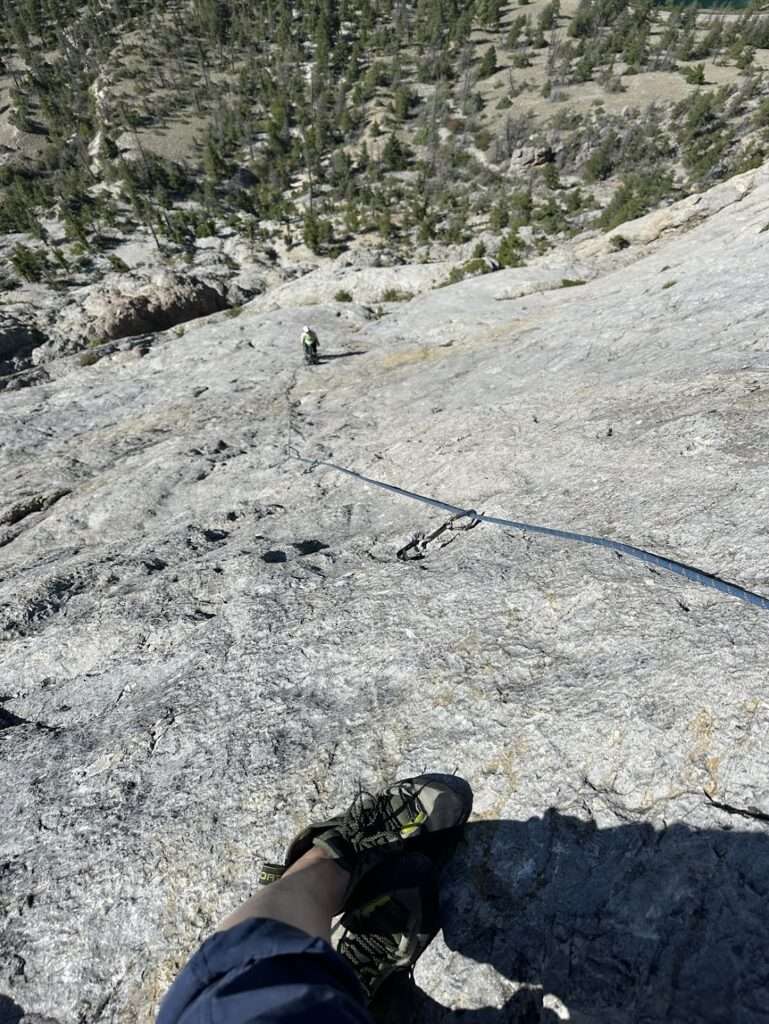
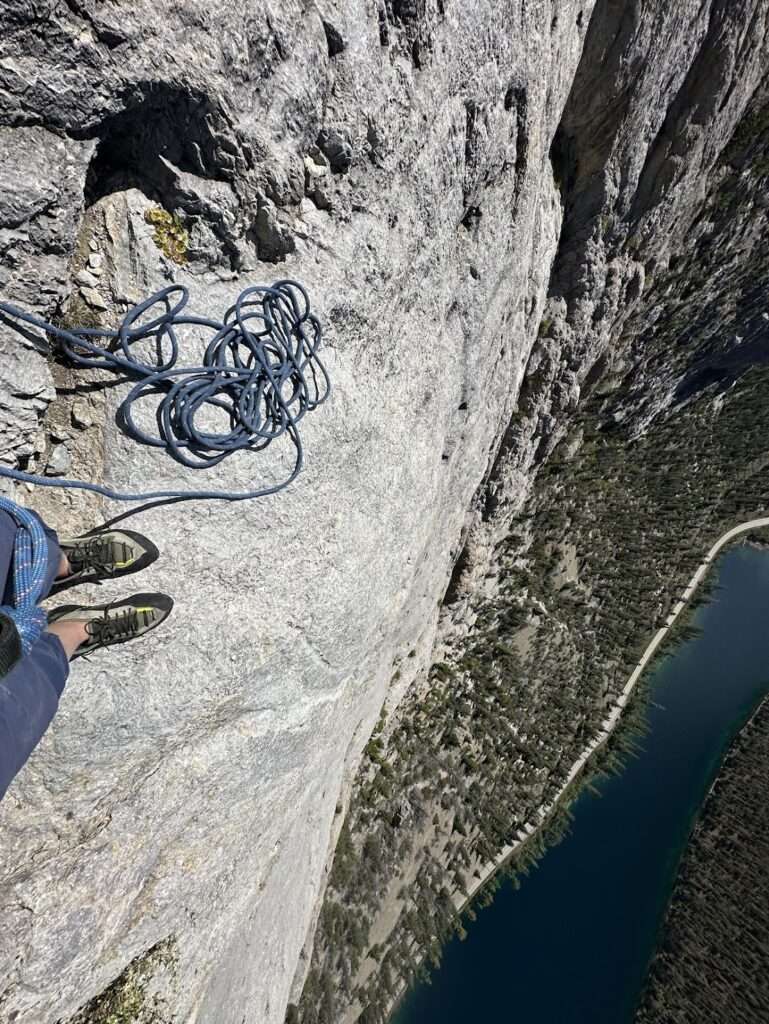
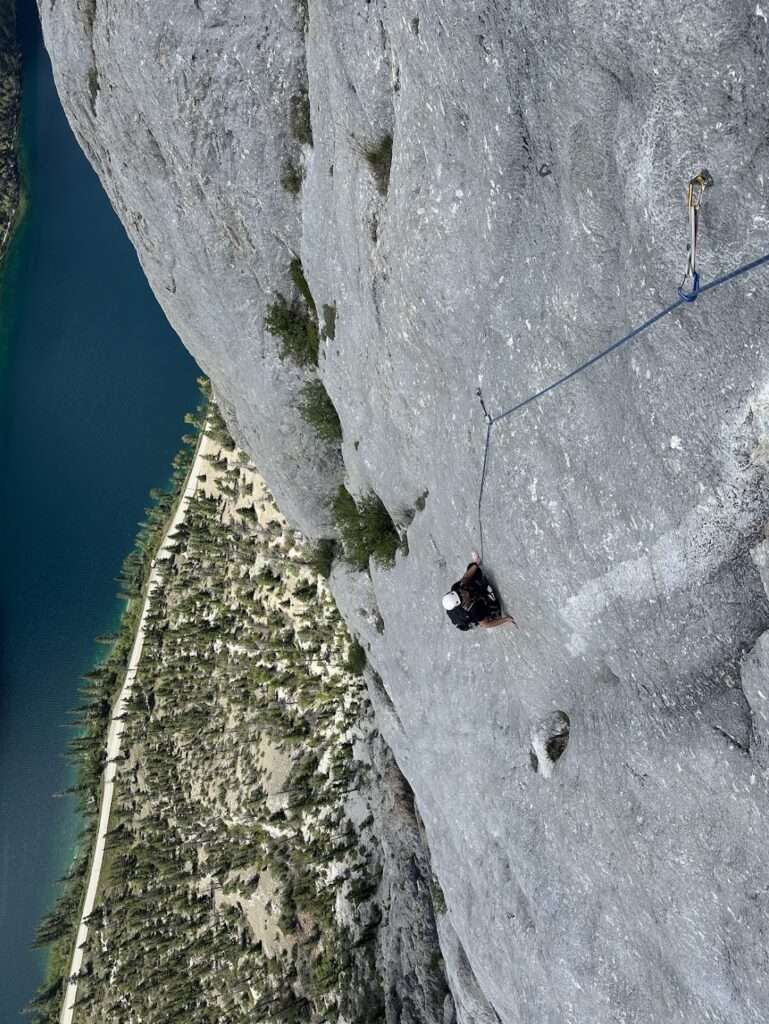
The distance between the bolts felt safe most of the time for our ability level. I think if you were a newer leader or not a confident 5.9 leader, it might feel pretty spaced out and scary. For example, some of the easier pitches only had three bolts on them over 30m. This would not keep you from getting hurt in a fall, but would keep you from rolling down the mountain. So it wasn’t terrifying like Star Chek, but also wasn’t a bolt ladder like Frontside 180.
The final pitch was “third/fourth class” and had no bolts or anchor. I found it fine, but depending on your experience in the alpine, you may not.
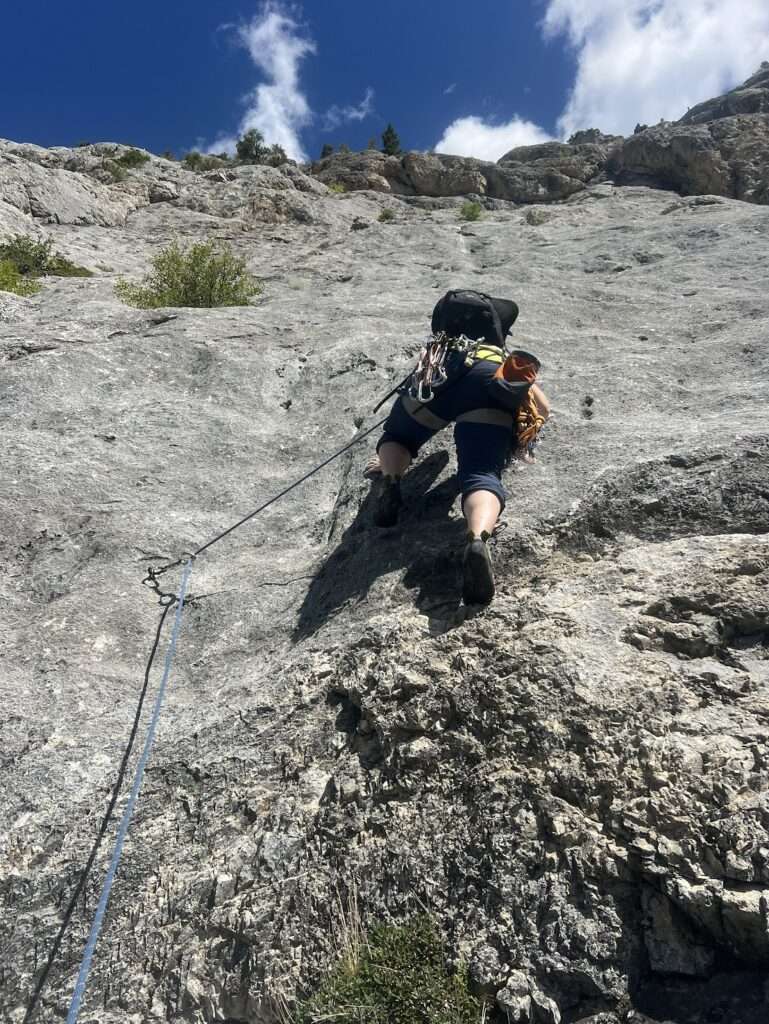
There are three 5.9 pitches all in a row. The last one is the hardest, with some very blank slab sections. I did not lead it nor did I climb it cleanly, so it doesn’t feel fair for me to offer a differing grade. But it was quite a lot harder than the two 5.9 pitches that came before it. I can see how one might climb all the way up there and then need to turn around …
Overall, the climb took us 9 hours, or about 30 minutes per pitch. About half of this we did before we were in full sun.
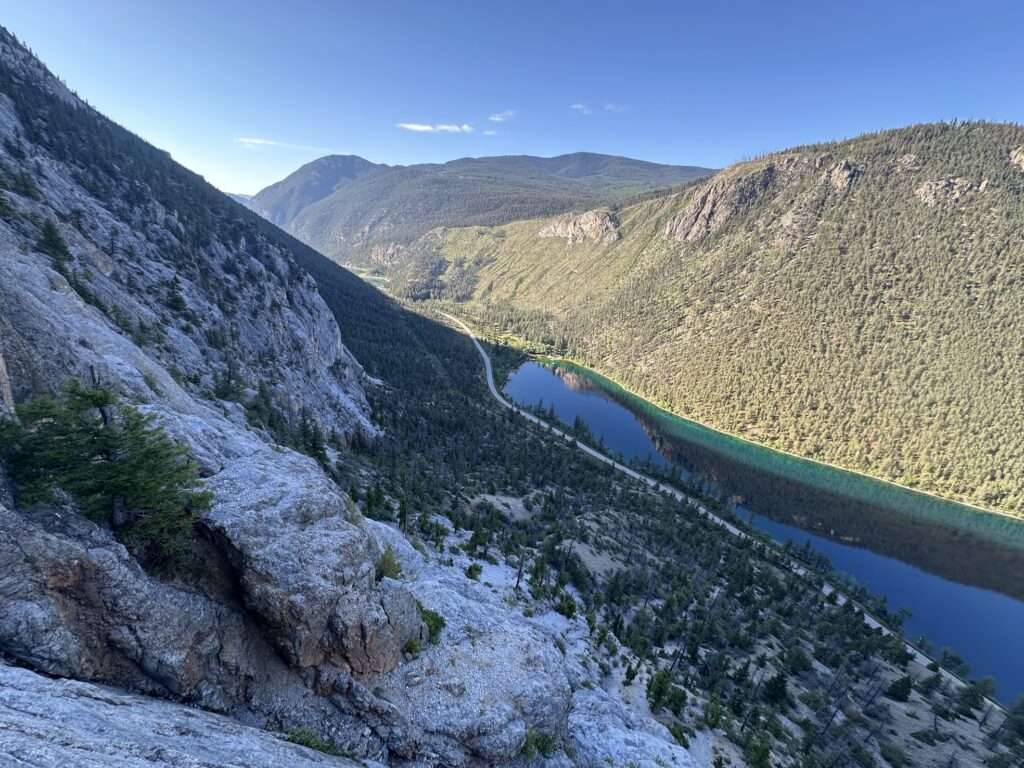
Descent
I think I will only climb The Goat once because of the descent, which was horrible. After a short rappel, you have to hike down 30 to 45-degree dirt and scree. Mountain Project said it would take 30-45 minutes, but I am not sure how that is physically possible. (Running? Sliding uncontrollably?) We took 2.5 hours plus a long break because we weren’t feeling so great (see next section), but I think 2 hours is realistic for the average person.
If you could fit hiking poles in your pack, that might be very helpful. Also, I have never said this before … but I wish I had gardening or rappel gloves! The trees and bushes I wanted to grab for a veggie belay were full of prickles! My hand hurt quite a while after this climb…
The descent was also the most dangerous part of the day due to rockfall. While climbing, you might knock some little rocks loose that could hit someone. But in the descent gully, huge rocks just went flying straight down no matter how careful we were. This is definitely a one group at a time situation.
Having some tips on how to avoid rockfall in this situation would be very helpful. Here are some of the things I keep in mind:
- Keep your group really close together at all times. A slow-moving rock bumping your ankle could hurt a little bit. But if it had some distance to roll and really get going, it could hit your chest or head and seriously injure or kill you.
- Rocks might move even after you leave the area. Look for natural areas of protection and try to stay behind them, such as behind boulders, big trees, or spaces where the gully zigs or zags away from the center.
- If you want support, push down on rocks. Never pull on them. Even boulders that look too big to move will move when they are on dirt/scree.
Lessons Learned
I am an old pro at digging deep and pushing through in not-quite-so-technical terrain because of all my years of mountaineering and running. I learned I could do that with climbing, too! Climbing nine hours straight, no breaks, takes a toll on your body and your mind. But I kept going.
I also learned that climbing a route like this on a weekday was a fantastic choice.
The unfortunate mistake I made was underestimating how much water I needed. I am not used to operating in the desert or on really long multipitches where there is no way to refuel. If Lee hadn’t brought a little extra water and shared it with me, I would have been extremely uncomfortable. We were both very thirsty for most of the hike down, which did not speed us along. We found a little spring almost at the end of the hike, which we stopped at and drank from because we were sooo thirsty… even though the car wasn’t that far away.
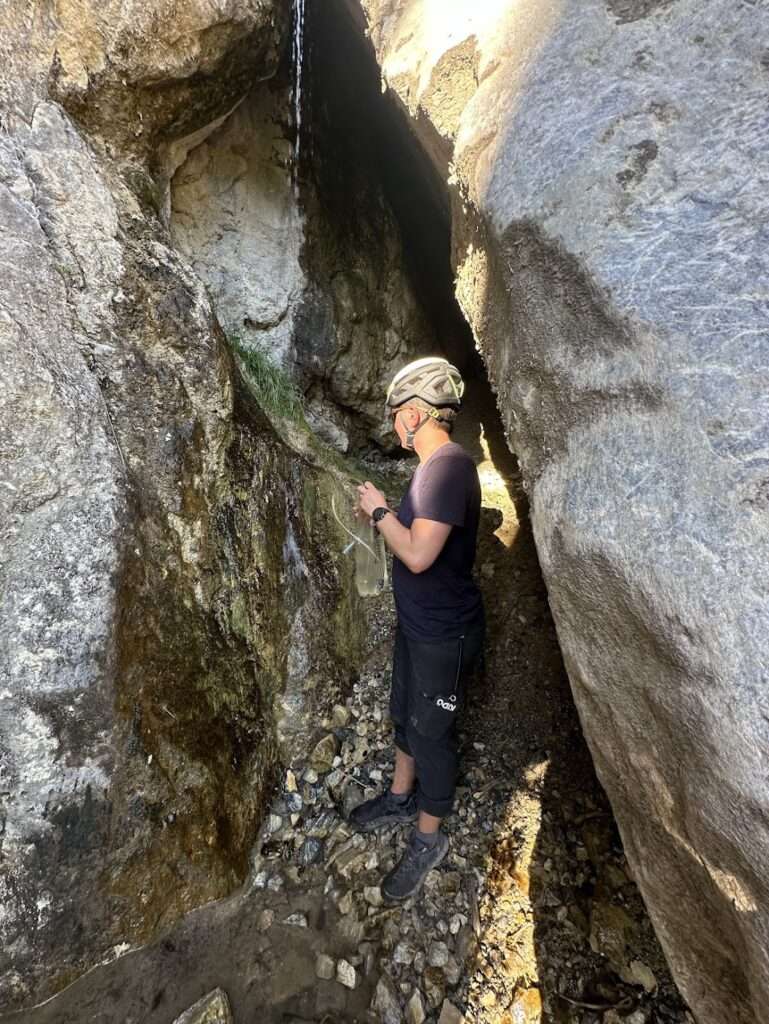
I have so much admiration and respect for the folks who developed this climb. What a tremendous undertaking it would have been to bolt all of this!
Discover more from We Belong Outside
Subscribe to get the latest posts sent to your email.


